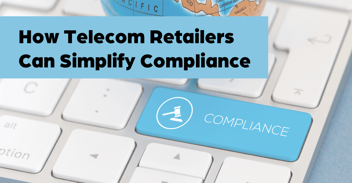
7 Ways Shiftlab Workforce Management Software Solves Unique Retail Challenges
For shoppers, a successful visit to a retail store seems simple. You head in, you pick a product, you check out, you leave. But those of us in the business know better. Behind the scenes, hundreds of moving parts must work in sync to create a smooth purchase. And one small snag can throw everything off balance. Inefficient scheduling. Compliance risks. Employee dissatisfaction. These disruptors can slow down productivity and hurt profits.
The solution? Workforce management software like Shiftlab.
Our retail workforce management software tackles these challenges with data-driven insights and automation. Let’s dive into seven key challenges retailers face and how Shiftlab can help.
7 Unique WFM Challenges Retailers Face
1. Labor Optimization
Retail managers spend huge chunks of time trying to walk the delicate line of staffing.
If you know, you know.
Schedule too few employees for a shift and your team will get overwhelmed and unable to be on their best game for customers.
Schedule too many employees for a shift and you inflate your company's labor costs for no reason.
Throw in see-sawing demand, holiday spikes, and random surges, and staffing gets about a thousand times more complicated.
How Shiftlab Helps:
Our workforce management software harnesses the power of AI to make sure you always have the exact right number of employees on a shift.
It might sound like a mythical, magical goal, but here’s how our WFM does it. The software analyzes your company's historical data, sales trends, and real-time demand signals. Using this information, Shiftlab automatically adjusts employee schedules to match peak and off-peak hours.
This means you can say goodbye to overstaffed slow periods and understaffed rushes.
For good.
2. Performance-Driven Scheduling
Too many retail managers still lean on outdated scheduling practices, like using Excel to create schedules. Manually assigning shifts in this way means losing out on an incredibly valuable metric to help you map out schedules: employee performance.
Without performance-based scheduling, shifts can feel chaotic for both employees and customers.
Your less experienced staff can struggle to satisfy customer needs during busy shifts. Customers might get frustrated and decide not to go through with a purchase if they don’t feel taken care of.
In the worst case, they’ll leave the store with a sour impression and a determination to leave a nasty Yelp review and never darken your store’s doors again.
This, in turn, leads to managers feeling stressed about the shift’s impact on revenue.
What if you could schedule your best employees during peak hours and give your newer folks more time to learn the ropes during slow hours?
With Shiftlab, you can set up exactly this type of retail management system for your workforce.
(Psst: need more info on how to use performance as a guide for scheduling? Check out our guide to retail performance management.)
How Shiftlab Helps:
Shiftlab's workforce management software constantly looks at key performance metrics for each employee. Our WFM connects with your point of sale (POS) system to track every employee's sales per hour, conversion rates, and customer engagement.
Using this data, Shiftlab creates schedules that put your best employees in the store during peak hours. At the same time, our retail workforce management software takes your employees’ needs into account, making sure no one gets scheduled during times they’re not available, or during requested time off.
This helps maximize your store's revenue potential, all while making sure employees don’t feel overwhelmed and customers feel cared for.
Instead of flailing during high-stakes shifts, your less experienced team members get more time to improve during slow hours.
With Shiftlab, they’ll only get moved up to the more high-pressure shifts when their KPIs indicate they're ready.
3. Minimizing Overtime and Maximizing Productivity
Unchecked overtime can take big bites out of your organization's profit margins. But sometimes, extra coverage is unavoidable. When you have to call in extra help, you have to call in extra help.
Imagine a retail store gearing up for a weekend rush. A manager, relying on manual scheduling, doesn’t realize that a few employees are already close to hitting overtime.
By Sunday evening, several team members have clocked extra hours, pushing labor costs well beyond budget.
Sound familiar? You’re not alone.
How can you make sure each shift is efficient without overspending on labor? How can you spot gaps in productivity before they impact your bottom line?
By reigning in retail management with Shiftlab.
How Shiftlab Helps:
We built Shiftlab’s intelligent scheduling system to help companies get rid of unnecessary overtime costs. Our workforce management software uses real-time data to make schedules that navigate overtime for you.
In other words, our WFM makes sure you don't schedule any employees who are close to maxing out their 40 hours.
Managers get instant alerts when employees approach overtime limits, which lets them easily adjust the schedule to avoid overscheduling those team members.
No tedious manual oversight needed.
4. Ensuring Compliance
Navigating labor laws can be an entire, overwhelming job in itself. Regulations vary by country, state, county, or city, and unless you're an employment attorney, it feels impossible to navigate.
Most retail managers are not, in fact, employment attorneys, yet they’re still expected to navigate complex labor laws. Even with HR or legal support, the responsibility of compliant scheduling often falls on managers.
One misstep—a missed break, too much overtime, or an unapproved shift length—can lead to violations.
Violations, even unintentional ones, can cost thousands of dollars, often more.
You need someone—or something—to keep track of all the relevant laws and make sure your operations stick to each one.
How Shiftlab Helps:
Shiftlab's WFM takes the burden of labor law compliance off your shoulders so you can focus on managing your team.
Our workforce management software comes with built-in regulatory safeguards that prevent accidental violations. The platform automatically tracks breaks, overtime, and shift limits for each employee.
By handling this, our WFM makes sure every schedule lines up with legal requirements.
Shiftlab's automated compliance checks mean that if something isn't lining up with the law, managers will receive an alert in real time. That way, they can make quick adjustments before any problems crop up.
Additionally, our software creates audit-ready reports with an accurate breakdown of labor compliance.
You won't have to do any of the heaviest compliance tasks manually.
5. Accurate Demand Forecasting
When demand forecasting is off, retailers face two major problems:
- Understaffing the store during busy hours, leading to long lines and frustrated customers.
- Overstaffing the store during slow periods and racking up unnecessary labor costs.
Without reliable predictions about how busy or slow a day might be, managers have to play the guessing game. This can lead straight to understaffing that frustrates customers or overstaffing that inflates costs.
How Shiftlab Helps:
Shiftlab’s AI-powered demand forecasting eliminates the need for guesswork.
Our software analyzes historical sales data, traffic patterns, and seasonal trends. With this information, our retail management system can accurately predict peak and slow periods.
We'll show managers what those peaks and valleys are, and they can schedule staff to fit those fast and slow times.
The result? Your store gets the best possible coverage without spending too much on labor.
Our WFM platform also adjusts to promotions, holidays, and local events that affect your store traffic. This means your business can always take a proactive role in adjusting staffing levels for maximum impact.
6. Real-time, Actionable Insights
Retail managers need real-time visibility into workforce performance to make informed decisions. If they don't have this up-to-the-minute data, they're often pushed to put out fires all day instead of preventing them in the first place.
And if employees are also in the dark about their shifts, they don’t get to play an active role in managing their schedule.
How Shiftlab Helps:
Our workforce management software features a tool called Store Pulse. This tool gives managers and employees real-time insights.
On the employer’s end, Store Pulse tracks:
- Labor budgets and costs
- Employee performance
- Store opening times
- Scheduled breaks (and whether employees take them)

For employees, Store Pulse can:
- Give them notifications about upcoming shifts
- Send alerts when it’s time to go on break
With Store Pulse, managers can spot potential issues before they balloon into expensive problems. They'll get instant alerts for everything from overtime risks to unexpected changes.
And since employees get relevant alerts too, your whole team can work together to keep operations running smoothly.
7. Boosting Employee Retention
High turnover is a constant challenge in retail. In the United States, turnover has been rising steadily for about a decade as employees leave for jobs with better pay and better engagement.
Turnover is expensive, leading straight to higher recruitment and training costs for retail companies.
So why do employees leave? Often, it's due to inflexible schedules, low pay, poor communication, and issues with work-life balance.
Employees who feel undervalued or burned out are more likely to seek better opportunities elsewhere. And when they leave, managers are left scrambling to fill shifts, increasing hiring and training costs.
How Shiftlab Helps:
Shiftlab WFM gives your employees flexibility, transparency, and control over their own schedules.
Our retail workforce management software comes with a mobile app for both employees and managers. Employees can use the app to:
- See when and where they work
- Get a snapshot of who they’re working with
- Request time off
- Clock in and out
- Swap shifts with other team members using Shiftlab’s Open Shifts tool.

When employees have more control over their schedules, they feel more valued and empowered in their roles. This reduces frustration, helps minimize burnout, and improves overall job satisfaction.
Together with fair pay, these factors make your employees more likely to stay with your company. And the less you have to spend on recruiting and hiring costs, the more you have to spend on paying your employees well.
Our mobile workforce management software can help you make it all happen.
Let Shiftlab’s WFM Help Your Team Thrive
Retail workforce challenges don’t have to drain your time, your company's finances, and your employees' morale.
With our retail workforce management software, your store will run like a well-oiled machine.
All day, every day.
Book a free demo today and see how Shiftlab can transform your retail management systems.
FAQs
What is retail workforce management?
Retail workforce management is a system of optimizing store staff to meet the demands of your business. It includes scheduling employees based on sales trends and making sure you're compliant with labor laws. A good retail workforce management system also helps make employees feel more valued in the workplace. Transparency and communication are key!
What is workforce management software?
Workforce management (WFM) software is a tool that helps businesses manage employee scheduling. It uses AI insights and automations to help retailers follow labor laws and schedule the right employees at the right times. WFM software helps improve productivity, employee satisfaction, and a store's overall profitability.
What is WFM in retail?
In retail, WFM stands for workforce management software, a tool that helps retailers optimize staffing in their stores. WFM helps managers schedule employees to work shifts that best match their abilities and needs. It also helps reduce labor costs, increase compliance with local laws, and drive employee satisfaction.
%201.png?width=564&height=119&name=Shiftlab_Logo%20(Black)%201.png)



